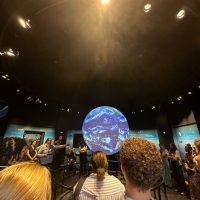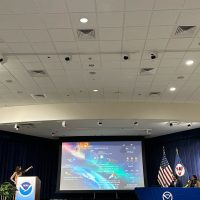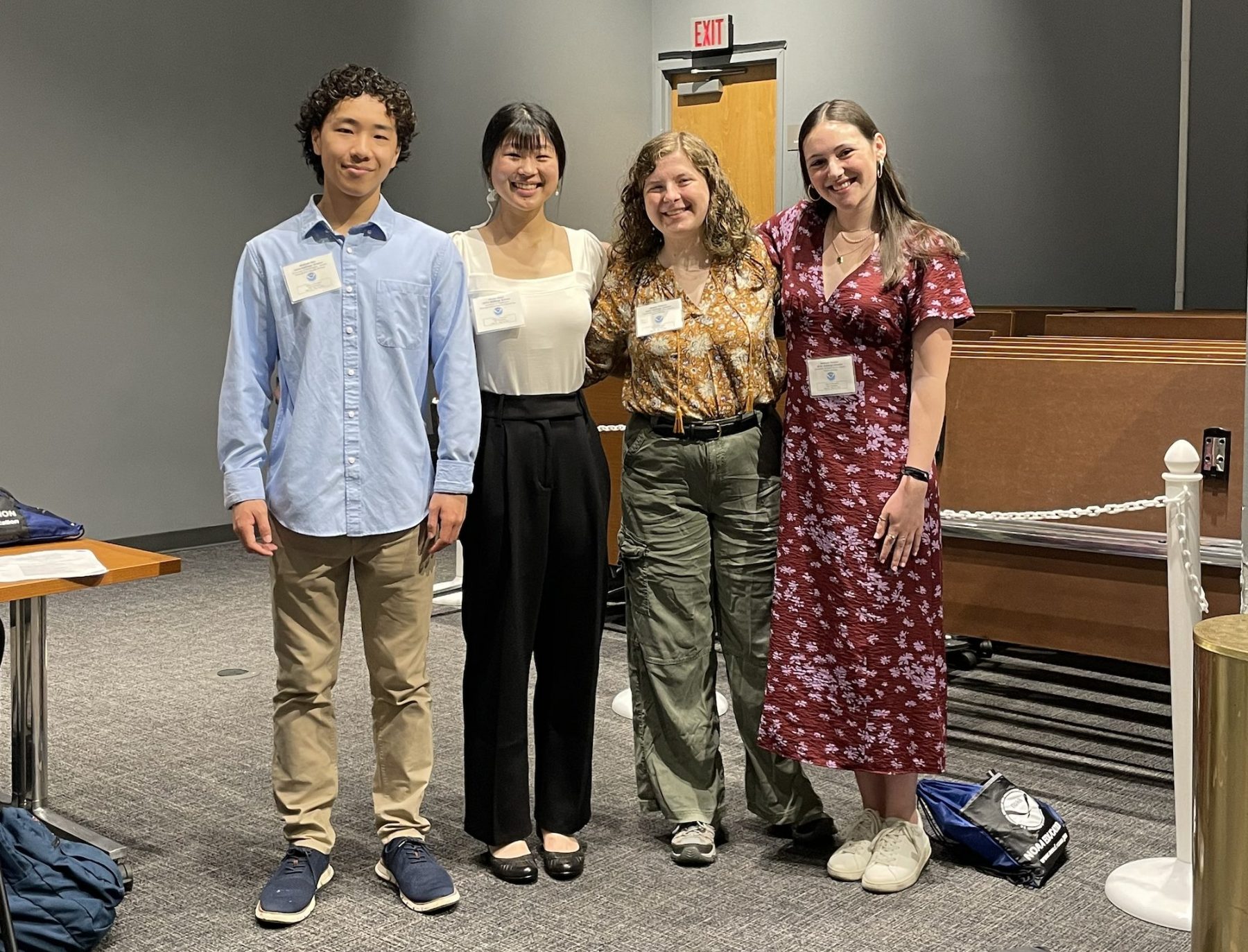A trip to DC for the NOAA Hollings Scholarship orientation
Each year, hundreds of students apply for the competitive NOAA Ernest F. Hollings Undergraduate Scholarship. This scholarship recognizes outstanding students studying in NOAA mission fields, such as aquatic and marine science, with scholars receiving funds to support their studies, as well as paid summer internship opportunities at NOAA facilities across the US. We caught up with Michael Han, a SAFS undergrad, who along with three other students from the UW College of the Environment, was chosen as 2024 Hollings Scholars. Check out our Q&A with him to find out more about his orientation experience at NOAA’s headquarters near Washington DC in May.
What did orientation for NOAA Hollings Scholars involve?

Orientation involved a three-day session at NOAA headquarters near Washington DC, with the Monday and Friday of that week spent traveling, with all these expenses covered as part of the scholarship award.
On Tuesday, all the scholars for this year gathered for the first time outside the NOAA auditorium. We had introductions from various members of the NOAA administration and senior leadership, where they talked about their hopes for us and gave general advice and motivation for succeeding in the Hollings program.
In the afternoon, presentations from the line offices (departments) began. These offices included NMFS (fisheries), NWS (weather), and NOS (ocean). Each line office had one or two representatives who explained the purpose of their work, several current projects currently being undertaken, and afterward a period for questions. After the official program concluded on Tuesday, there was a networking dinner session at a nearby theater which allowed us to meet, talk, and network with other scholars.
Wednesday started similarly, with presentations from NESDIS (satellites), and OMAO (aviation and NOAA corp). this was followed by a career internship fair, where all the presenters we had previously heard from, plus additional NOAA employees, were there at individual tables separated by office. This gave us the opportunity to ask them specific questions and career advice for succeeding in our chosen paths. At the fisheries table, I was able to ask about NOAA’s work with anadromous fishes and learn more about the pathway to becoming a fisheries biologist.
On Friday, tours were conducted to destinations that we had chosen earlier, including NESDIS, the National Aquarium, and wetlands kayaking.
What was a particular highlight for you in attending the orientation?
The tour I decided to take was the NMFS National Systematics Laboratory, and it was definitely the highlight of my trip. The Systematics Lab is located inside the Smithsonian’s Museum Support Center, a small grouping of buildings around half an hour from the Natural History Museum. The director, Dr. Collins, gave us a quick presentation on the importance of systematics and taxonomy before leading us through hallways, which were filled with working spaces and labs. Inside the labs there were many complicated machines that I don’t remember the names of, but the cryogenic freezers were probably the coolest. There were around 8-10 of these massive 10ft tall aluminum tanks filled with nitrogen, and inside these animal matter can be kept indefinitely allowing scientists in the future to work on the same samples as they are now.
We then walked through the collections, which included massive tortoises, crocodiles, antlers, horns, and even an entire giraffe that Teddy Roosevelt shot. The invertebrate and fish collections had also amassed huge numbers of specimens in jars. Looking at the rows and rows of preserved organisms, and then realizing it’s just a tiny proportion of all the creatures on the planet, makes you wonder what’s still out there undiscovered.
- A visit to the Smithsonian which houses the NMFS National Systematics Laboratory.
- Specimen collections inside the Smithsonian.
Top tip for other students applying for NOAA Hollings Scholarship?

The best advice I could give is to participate in activities that align with NOAA’s mission of learning more about the ocean and atmosphere and to show that in your essays as well. This could mean explaining what your career goals are, how you’re currently working towards them, how Hollings can help you achieve them, and what you’d get out of your internship. I’d also say that a strong letter of recommendation is really important, so make sure to find someone who can write a good, knowledgeable letter.
Finally, I’d recommend checking out the Hollings Prep Program, which is an opportunity designed for freshmen to later become more competitive in Hollings, plus it’s a great chance to make professional connections. It also comes with a stipend and an internship at a NOAA location!
What are next steps for you in this journey as a NOAA Hollings Scholar?
On October 1, the internship database will open which lists all the possible projects an intern can apply for. It should come with a general project description and working location for each project. I’m able to apply for multiple projects, and each one has different requirements, but they may require interviews like applying for a job.
Once the mentor has settled on an intern and both are in agreement, a 3-day site visit will be arranged before next summer. This allows us to visit the location we’ll be working on, learn more about the project, and meet the people doing the science. All travel and housing costs are covered by NOAA. A 10-week internship will then be conducted over the summer of 2025, and at the end we’ll return to DC for a symposium to present our findings and learn about what other scholars have been working on!


